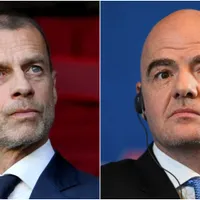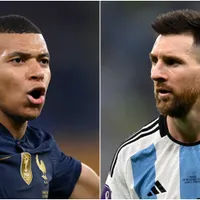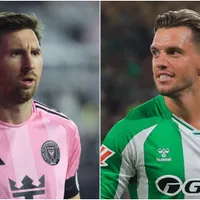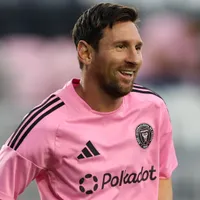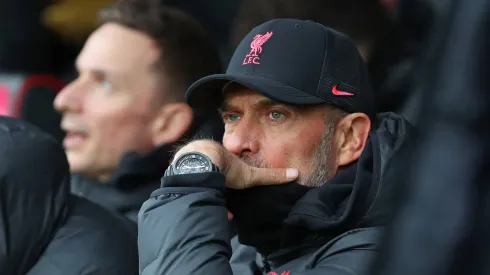In the midst of the 2015/16 season, Liverpool sacked manager Brendan Rodgers after a downturn following a title charge just two seasons prior. In stepped Jürgen Klopp, a boisterous manager from Borussia Dortmund.
Since that signing, Liverpool have gone from the team that once was, back to one of Europe’s top-level teams. Premier League and Champions League crowns later, this Liverpool side seems bound to finish outside the top four for the first time since that 2015/16 season.
On some days, Liverpool looks near unbeatable. It smashed records as the Reds handed rivals Manchester United its worst loss in history. Then, no more than a week later, it loses to a Bournemouth side it previously defeated 9-0. It is hard to fathom, but speaks volumes about the state of the club’s stop-start rhythm this season.
As of now, the club is sixth in the Premier League table, and a Champions League exit is on the cards against Real Madrid. The sudden downturn of Liverpool in the 2022/23 season is one that can use some perspective.
Klopp’s reign at Anfield
In the 2015/16 season, his first partial season at the helm, Klopp guided Liverpool to eighth in the Premier League. Nowhere near good enough for a club the size of Liverpool, with such a rich history and a plethora of English and European trophies. Immediately, Klopp faced questions over whether or not he was the right man for the job. Yes, he won the Bundesliga twice with Dortmund, but leading Liverpool to its first Premier League title and 20th first division win are a different task, particularly given a downturn in form in 2014/15.
The club backed the manager in the summer transfer window. Key players in Sadio Mané, Joel Matip, Loris Karius and Georginio Wijnaldum arrived. That yielded a fourth-place finish in the 2016/17 season. The huge step forward guaranteed Champions League qualification for next season. That attracted new players from other clubs in Europe. The summer of 2017 yielded Andy Robertson, Alex Oxalade-Chamberlain and Mohamed Salah from Roma.
Liverpool’s team entering the 2017/18 season was formidable, particularly in the attack. A front three of Mane, Salah and Roberto Firmino devastated Premier League defenses. That 2017/18 season, the first for that front three, yielded 57 goals between that front three.
Turning point
Even then, the club cried out for a world class center back, a quality goalkeeper with consistency and a multifunctional right back. The January 2018 transfer window worked as a turning point for the club. Liverpool went to the talent at Southampton to bring in Virgil van Dijk for a record fee for a defender of around $85 million. At the same time, it sold Philippe Coutinho to Barcelona for a fee rising over $150 million with add-ons. That sum allowed Liverpool to be a little more liberal in the transfer market.
The arrival of van Dijk and the departure of Coutinho brought another fourth-place finish and a trip to the Champions League final. Despite this, Klopp was building something special at Anfield. Alisson and Fabinho came in, and the emergence of Trent Alexander-Arnold looked like the final pieces of the puzzle.
A full-fledged machine from back to front put together one of the best seasons in recent memory. Liverpool amassed 97 points in the league, yet still for short of Manchester City. That figure was the most points for a second-place team in the history of Europe’s top five leagues. Also, Liverpool won the UEFA Champions League, a statement of return for one of Europe’s most historic clubs.
Then, Liverpool finally won the Premier League in the 2019/20 season, even if it had to wait through the COVID-19 pandemic.
Liverpool downturn unexpected after another successful season
Now fast forward to present day, March 2023. Liverpool have kept the majority of their immense starting eleven. In fact, the only major departures are Mané ad Wijnaldum. Meanwhile, the club brought in Darwin Núñez, Thiago, Diogo Jota and Cody Gakpo. Despite that, Liverpool sits seventh in the table. To make matters even worse, they lost the first leg of their Champions League tie with Real Madrid at home, 5-2.
A combination of factors have contributed to this huge drop-off and decline.
Injuries have played an important role. with Ibrahima Konaté, Virgil Van Dijk, Diogo Jota, Thiago Alcantara and Fabinho all spending extended periods of time on the sidelines.
However, even with their preferred eleven fully fit, there is something missing. Salah, although scoring plenty of goals, seems a shell of the player who was scoring at ease for years. Firmino still has the creativity and technical ability, but the goals dried up for him. The backline is porous and leaking goals left and right. Trent Alexander-Arnold is being exposed week in and week out by pacy wingers. The always-present concerns over defensive capabilities are making more frequent appearances.
Even Virgil Van Dijk and Alisson, two consistently world class players, have been poor this year. Alisson has made costly errors leading directly to goals, and Van Dijk has seemed an unsure shadow of his previously imperious self.
Could this be a hangover from so much prolonged success? That hardly seems probable. The best players perform year after year at the highest level, regardless of past successes. And Klopp seems like a coach who knows how to consistently bring the best out of his players.
The loss of Sadio Mané
Yes, he scored lots of goals and got lots of assists, which is always hard to replace. But his biggest influence on this Liverpool side was his willingness to incessantly high press. The way Liverpool have always played under Klopp, and the style which has brought them so much success, is a constant high press. And Sadio Mané was always the player that started that high press. It cascaded off of him, with Mané at the tip, and the rest of the team filling in behind him.
By putting their opponents under right when they lose the ball, it prevents their opposition from getting on the front foot and establishing a foothold in the game. It tires out opposing defenders and midfielders, making them more prone to errors and slack defending. Attacking players switch off, because they rarely get any touches on the ball or get into attacking positions. Pressing forces turnovers in the final third, leading directly to goals. And finally, it takes the pressure off of Liverpool’s back four.
Trent Alexander-Arnold has never been a good defender, but he didn’t have to be with the way Liverpool used to play. The fact that they pressed so high meant that rarely was he exposed one on one in his own defensive third. The majority of the time, he was in attacking positions. That allowed him to accentuate his wonderful crossing ability, hiding defensive frailties.
The whole team worked harder in flashes, to work less overall. The faster they won the ball back, the less time they spent out of possession, retreating and working hard to win the ball back. The more time they dictated the game, turned the screw, and tore teams apart.
But with the loss of Sadio Mané, the high press has fallen apart. It no longer looks like the well oiled, lightning fast machine it once was. With players of Salah and Mané’s pace running full tilt at you, opposing players would panic and kick the ball away, ceding possession almost immediately. No opposing player had more than two or three touches on the ball before a red shirt was in their face, forcing them back.
Now, teams have time to maintain possession, peg Liverpool back, dominate and dictate the play, and methodically expose their weaknesses.
Without Sadio Mané, the Liverpool of old doesn’t work. Mané was the spark, the caffeine for this red giant, and without it, it has inadvertently dozed back off into its version of mediocrity.
I don’t doubt they’ll be back, and sooner rather than later with a coach of Klopp’s pedigree. The downturn of Liverpool is hard to put on one player, but it could show the significance of Sadio Mané.
PHOTO: IMAGO / Colorsport

